View Recorded Webcast: Automatic Encryption on IBM i
|
Simplify your encryption project. Encrypting data easily, automatically and securely on the IBM i is possible using the new encryption capabilities with V7R1 and AES/400. I recently sat down with Patrick Townsend, Founder and CEO of Townsend Security to ask, what are the five things customers need to know to help their organization automatically encrypt sensitive data on IBM i V7R1 with AES/400? For even more information on automatic encryption on the IBM i, view our webcast below!
1.What is FIELDPROC?
In release V7R1 of the IBM i operating system IBM enabled it’s customers to implement automatic encryption using a new column-level API called FIELDPROC. FIELDPOC is an exit point that sits at the column level of the database and enable IBM i users to implement encryption and decryption without making any changes to their application source code.
2. We’re at V7R1, now what?
Upgrading your operating system is a start, however, IBM doesn’t provide the actual exit point software IBM i shops need to automatically encrypt and decrypt data - third party vendors and customers must do this. Townsend Security’s AES/400 solution enables organizations to implement automatic encryption.
AES/400 and the FIELDPROC exit point in V7R1 give companies to easily encrypt sensistive data. We call it automatic encryption, because it is the easiest, fastest and most secure way to encrypt data on the IBM i.
3. What types of data can be encrypted?
IBM i database applications use a variety of fields to store sensitive information. Encrypt fields that store data such as credit card numbers, SSN, birth dates, address, account numbers and other PII instantly without impacting applications.
Alliance AES/400 FIELDPROC support will protect any of the above mentioned fields without changing your database or your business applications. There is no need to reformat your database, or expand field sizes.
While most IBM i customers will use FIELDPROC encryption with legacy RPG and COBOL applications, FIELDPROC support also works with SQL applications, and Alliance AES/400 supports both program models concurrently. Your ILE and OPM applications will work well with FIELDPROC data protection. You do not have to have the source code for your application to implement Alliance AES/400.
4. Are there any security risks with automatic encryption using FIELDPROC?
Native IBM i object or user authorities will not protect encrypted data. Automatic encryption and decryption works for all users and applications. Administrators cannot rely on native IBM i object or user authorities to control access to protected data, additional controls and policies must be put in place.
Data masking simplifies access control for security administrators. It allows administrators to define which users and applications should have access to data and exclude users or applications that should not. Security administrators can define users who should have access to the data, and define a default policy that masks the data for others
5. Will automatic encryption impact performance?
The IBM FIELDPROC exit point works by calling the exit program for each database insert, read, or update. The exit point program is also called on certain query and file positioning operations. The right encryption solution can help minimize impact to system performance. Alliance AES/400 FIELDPROC support has been optimized for performance. The Alliance AES/400 encryption APIs are capable of encrypting 1 million credit card numbers in less than one CPU second. They are highly optimized for performance, and perform up to 100 times faster than equivalent IBM APIs on the IBM i platform. These same Alliance AES APIs are used for FIELDPROC encryption.
For more information on automatic encryption using FIELDPROC on the IBM i, view our webcast.

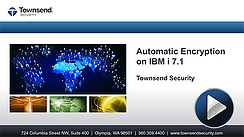

 The modern enterprise runs on a variety of computing platforms. The concept of being "an IBM shop" has gone the way of the buggy whip. With cloud computing and virtual machine technology, you may not even know what your hardware base is. This has caused those seeking to realize the benefits of standardization to shift their focus to the software.
The modern enterprise runs on a variety of computing platforms. The concept of being "an IBM shop" has gone the way of the buggy whip. With cloud computing and virtual machine technology, you may not even know what your hardware base is. This has caused those seeking to realize the benefits of standardization to shift their focus to the software.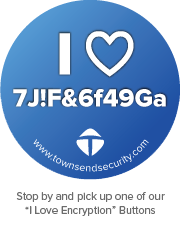 It’s almost here, that time of year when IBM System i (AS/400, iSeries) customers gather as a community to learn and collaborate about what is new with the platform. It's almost time for
It’s almost here, that time of year when IBM System i (AS/400, iSeries) customers gather as a community to learn and collaborate about what is new with the platform. It's almost time for  Organizations need to comply with an increasing number of data privacy regulations. In addition to regulations such as PCI, HIPAA/HITECH, GLBA/FFIEC, and Sarbanes-Oxley, states are passing their own privacy laws. For example, Massachusetts says that if you are doing business with anyone in their state, you must comply with their privacy law – even if your business is located across the country.
Organizations need to comply with an increasing number of data privacy regulations. In addition to regulations such as PCI, HIPAA/HITECH, GLBA/FFIEC, and Sarbanes-Oxley, states are passing their own privacy laws. For example, Massachusetts says that if you are doing business with anyone in their state, you must comply with their privacy law – even if your business is located across the country. 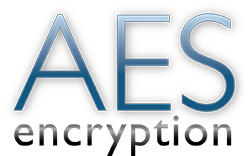 AES encryption has become the de facto standard for protecting data at rest in databases and unstructured data such as flat files, messages, EDI, and XML documents. As enterprises deploy data security solutions to meet compliance requirements, they are frequently surprised by the performance impacts of encryption. Inadequate attention to encryption performance can lead to increased costs, delayed or failed projects, compliance failure, reduced flexibility to meet competitive challenges, and exposure to legal liability.
AES encryption has become the de facto standard for protecting data at rest in databases and unstructured data such as flat files, messages, EDI, and XML documents. As enterprises deploy data security solutions to meet compliance requirements, they are frequently surprised by the performance impacts of encryption. Inadequate attention to encryption performance can lead to increased costs, delayed or failed projects, compliance failure, reduced flexibility to meet competitive challenges, and exposure to legal liability. A large multi-brand retailer, that sells its products online and in traditional retail outlets needed to meet PCI Data Security Standards for protecting customer credit card information. After evaluating several different vendors for performance they decided on AES Encryption from Townsend Security. They deployed the Alliance AES/400 Encryption solution to protect sensitive data in DB2 database files and in a variety of unstructured data files and were able to achieve PCI compliance in record time.
A large multi-brand retailer, that sells its products online and in traditional retail outlets needed to meet PCI Data Security Standards for protecting customer credit card information. After evaluating several different vendors for performance they decided on AES Encryption from Townsend Security. They deployed the Alliance AES/400 Encryption solution to protect sensitive data in DB2 database files and in a variety of unstructured data files and were able to achieve PCI compliance in record time.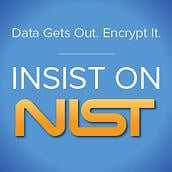


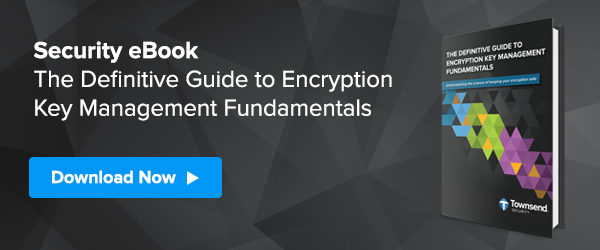
 The modern Enterprise deploys a variety of server platforms, operating systems, and programming languages. A major barrier to deploying encryption has been the challenge of accessing encryption keys from these widely divergent environments. Encryption key management solutions have the primary goal of managing and protecting encryption keys, and making them available to authorized applications in a secure fashion.
The modern Enterprise deploys a variety of server platforms, operating systems, and programming languages. A major barrier to deploying encryption has been the challenge of accessing encryption keys from these widely divergent environments. Encryption key management solutions have the primary goal of managing and protecting encryption keys, and making them available to authorized applications in a secure fashion.
 The new PCI Data Security Standards (PCI DSS v2.0) are here and we’ve gotten a lot of questions about the changes related to encryption key management. Because we work with a lot of companies going through PCI compliance audits and reviews, the new standards just confirm the trends we’ve seen over the last few months on how QSA auditors and security professionals view encryption key management, and what they see as the minimum requirements for managing keys. I recently sat down with Patrick Townsend, Founder & CTO of Townsend Security, to discuss the new PCI regulations in regards to encryption key management. To hear an expanded podcast of our conversation, click
The new PCI Data Security Standards (PCI DSS v2.0) are here and we’ve gotten a lot of questions about the changes related to encryption key management. Because we work with a lot of companies going through PCI compliance audits and reviews, the new standards just confirm the trends we’ve seen over the last few months on how QSA auditors and security professionals view encryption key management, and what they see as the minimum requirements for managing keys. I recently sat down with Patrick Townsend, Founder & CTO of Townsend Security, to discuss the new PCI regulations in regards to encryption key management. To hear an expanded podcast of our conversation, click